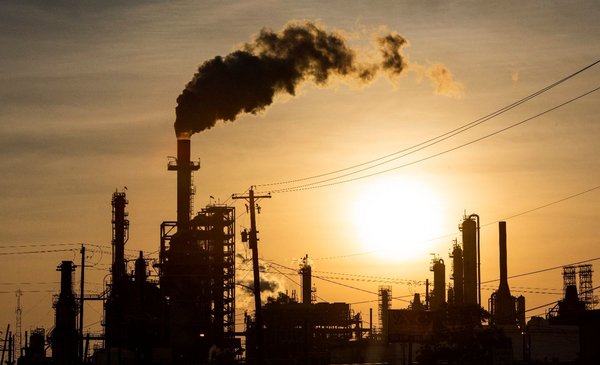The increase came after Putin announced a “military operation” in Ukraine, and promised retaliation against those who interfere.
Hours earlier, the Kremlin said rebel leaders in eastern Ukraine had asked Moscow for military help to confront Kiev’s troops. The threat of a conflagration sparked fears over the supply of key commodities, such as wheat and metals, amid growing demand as economies reopen after pandemic shutdowns.
In recent weeks, the price of Petroleum It was on the rise until this Thursday the Brent sbroke the $100 mark for the first time since September 2014.
“Russian-Ukrainian tensions lead to a possible demand shock (in Europe) and a larger supply shock to the rest of the world, given the importance of Russia and Ukraine in energy,” said Tamas Strickland of the National Australia Bank.
The dates when the price of oil exceeded US$ 100
2008, the year of all records
In January 2008, the price of a barrel exceeded US$100 for the first time in history.
The two reference prices reached their historical maximum on July 11: US$ 147.50 a barrel of Brent from the North Sea in the European market and US$ 147.27 that of WTI (West Texas Intermediate) in New York.
The 2008 records were due to geopolitical tensions in Iran, Nigeria and Pakistan, a tense balance between declining supply and rising demand due to emerging countries and China, and strong speculation around all commodities.
After the bankruptcy of the US bank Lehman Brothers in September and the beginning of the international financial crisis, the price begins to fall as investors urgently need cash.
In December 2008, Brent is trading at a minimum of US$36.20 and WTI at US$32.4.
2011 and the revolt in Egypt
The barrier of US$ 100 per barrel was broken again in January 2011 due to the revolt in Egypt and the Arab Spring with the risk of the protests spreading to the oil producing countries of the Middle East.
Egypt is not an essential producer of Petroleumbut it is a very important transit route through the Suez Canal and the Suez-Mediterranean oil pipeline (Sumed).
2012, embargo of Petroleum Iranian
The year 2012 begins with the price of Petroleum above US$ 100, propelled by economic sanctions against Iran, suspected of using the civil nuclear program to develop nuclear weapons.
In retaliation, Iran threatens to cut off its deliveries of Petroleum to Europe, raising concerns about global crude supply.
Finally, the European Union decrees an embargo of the Petroleum of Iran, whose exports fall by half.
A large part of Petroleum of the Gulf countries transits through the Strait of Hormuz, a strategic passage controlled by Iran that threatens to close it.
2012 to 2014, tensions in the Middle East
The price of crude oil fell below US$90 a barrel in June 2012, plunged by the economic crisis in the euro zone.
Until 2014, the prices evolved almost continuously below 100 euros sustained by the tightening of sanctions against Iran and the geopolitical tensions in the Middle East, particularly due to the conflict in Syria.
At the end of 2014, prices begin to plummet due to US shale oil flooding the market, falling below US$50 a barrel.
with AFP


















